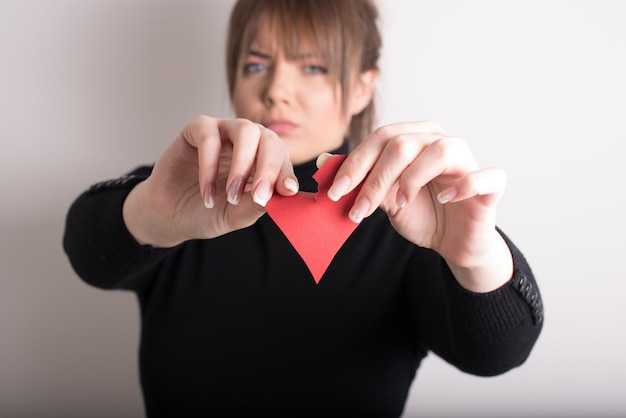How can someone know if an avoidant person actually feels regret about losing them when no words are spoken? Pause on that — it’s the kind of question that has kept countless people awake, staring at their phones, replaying the last exchange, wondering if they ever mattered. The silence is the sting: no slammed doors, no dramatic fights, no pleas—just disappearance. Then, weeks or months later, a subtle return: an old photo liked, a story watched, a casual “hey” with no apology or explanation. Is that remorse or a manipulative move? Clear distinction is needed. Avoidant people rarely grieve loudly. They don’t issue heartfelt apologies. They probe instead: lingering, testing, quietly peeking into your life to see if you remain soft enough to let them back in without earning it. The goal here is clarity so spirals stop, second-guessing ends, and regret isn’t confused with genuine transformation. Those who love someone with avoidant attachment know breakups aren’t processed the same way. Avoidants often don’t crumble, don’t send tearful messages at 2 a.m., don’t beg. They appear untroubled. That absence of visible pain leads to doubt: was it all imagined? Did they care at all? The reality is avoidance delays grief; detachment is a survival tactic. Close bonds were learned to be risky in their past, so they withdraw when emotions rise and go numb when things fracture. Regret can still be present, but it’s expressed quietly, indirectly, through little signals and passive reach-outs—brief moments when fear of losing you briefly outweighs fear of intimacy. Those crumbs are not confessions; they’re tests. Respond with warmth and the avoidant feels relieved—not ready to commit, just reassured that access remains. Then they disappear again, repeating the cycle. A like isn’t love; a meme isn’t meaning; a breadcrumb isn’t a breakthrough. Avoidants seek access, not intimacy—emotional safety without effort. If real regret exists, it shows up as accountability, clear conversation, and consistent behavior, not half-appearances. The first common sign: the soft reappearance. After long silence, a small, noncommittal contact appears—liking a post, a casual reply, a meme. This isn’t a reunion but a temperature check. Avoidants don’t process regret in a linear way; instead they show restlessness and low-risk digital pokes. It costs them nothing to like a post; for a healing heart, it costs everything. Reacting with hope simply confirms emotional availability and restarts the pattern: they peek, you respond, they pull away again. Beware mistaking digital crumbs for genuine care. Those who truly regret losing someone will return with clear responsibility, consistent effort, and a willingness to do the work. The second sign is nostalgia bait. An otherwise quiet day is interrupted by a message that recalls shared moments—“Remember that mountain trip?” or “Heard our song.” It sounds sweet, but this is often not an attempt to rebuild so much as a rewriting of the ending. Avoidants, uncomfortable with conflict and the role of “bad guy,” will highlight the highlight reel to soften their responsibility for the harm done. The intent is to trigger longing and blur boundaries so accountability fades. Responding sentimentally signals openness and plays right into that aim. Remember the full picture—the silence, the emotional withdrawal—and ask whether the memory is leading to real repair or just pulling you back into a familiar loop. True remorse shows in effort and responsibility, not in curated recollections. The third indicator is surveillance: silent, persistent watching. There may be no direct messages, but story views, repeat checks, or mutual friends mentioning casual inquiries reveal ongoing monitoring. Avoidants often avoid vulnerability, so they gather information from a distance to feel connected without risking exposure. Viewing posts repeatedly or showing up via third parties is regulation, not romance. Watching is not the same as showing up; curiosity doesn’t equal commitment. Sometimes the watching is meant to be noticed—a passive signal that keeps them alive in your mind with no apology, no risk. If content creation or emotional reactions to their silence continue, the dynamic resets and control remains with them. The healthy response is to hold boundaries: don’t perform for those who lurk; if they want to come back, they must knock rather than lurk. The fourth sign is a softened tone. After boundaries are held and silence persists, an avoidant may reemerge with gentle, blame-free messages—“I’ve been thinking about you,” “I hope you’re okay.” That tone tempts hope, but tone alone is not transformation. Softness can be strategic: it’s a gentle test when they sense you slipping out of reach. A kind voice without changed behavior keeps the pattern intact—just with nicer packaging. If the person who once shut down still avoids the tough conversations and won’t take emotional responsibility, their softness is being used to reel you back in, not to rebuild. What matters is action: consistent effort, clear plans, and honest accountability. If those are missing, the polite knock at the door doesn’t deserve to be answered. The fifth and most deceptive sign looks like growth: a micro-apology or a tiny trust-building gesture. After no contact and personal rebuilding, an avoidant might finally say something like, “I’m sorry I pulled away,” or claim they’ve been reflecting on how they hurt you. That small acknowledgment feels huge after silence, but it can be survival strategy rather than genuine repair—just enough emotion to keep a connection thread intact. Another tactic is suddenly “giving space,” framed as respect but sometimes functioning as a way to delay deeper work. To distinguish real effort from show, examine the pattern: are conversations staying surface-level after the apology? Are the real reasons for the breakup avoided? Does the person soften only when sensing loss? An apology without accountability is PR; gestures without follow-through are maintenance, not reconstruction. Growth from an avoidant is possible, but it requires time, ownership, and continued action. Someone who truly regrets losing you will ask how to rebuild trust, will listen, and will do the slow, uncomfortable work. Anything less is comfort disguised as change. Putting the pieces together: those quiet returns, selective memories, distant watching, softer tones, and small apologies might signal regret—but more often they signal a desire to feel loved without being willing to fully love back. Regret does not equal readiness, and a wish for access is not the same as wanting a committed relationship. Don’t confuse discomfort in the avoidant with an invitation to a second chance. Returning to a dynamic where one person gives and the other takes is a very real risk. A healthy partnership can’t be built on someone whose remorse only surfaces once they sense you might leave; fear of loss isn’t commitment. So the next steps are clear: don’t chase, don’t perform, don’t contort to prove worthiness. Let them sit with their regret in silence and distance. Your love wasn’t too much—you were simply present for someone who wasn’t equipped to receive it. You showed up and they weren’t ready. When they come back with vague memories, a gentler voice, or a half-apology, there’s no need to react or to reopen doors they refused to pass through earlier. Holding boundaries isn’t cruelty; it’s self-preservation. Allow them to carry the consequences of walking away. By refusing to wait and explain, by choosing self-care over proving you’re lovable, recalibration happens: healing without bitterness, moving forward without malice. Let them wonder and feel the loss they created. Your love is not a revolving door or a trial version—it’s a gift that is earned. Choose the life that values you and move on with the version of yourself who knows better.
Practical guidance: how to tell regret from manipulation
Here are specific, observable differences between genuine regret and contact that’s meant to maintain access:
- Timing and consistency — Real remorse shows up repeatedly over time and not only when they sense you slipping away. If contact is sporadic and tied to milestones (your birthday, a night out) it’s likely access-seeking.
- Depth of communication — Regret leads to difficult conversations about what went wrong and why. Manipulation stays surface-level, using nostalgia or kind words without addressing core issues.
- Accountability — Someone who truly regrets will accept responsibility without making excuses or flipping blame. They’ll name specific behaviors they will change.
- Behavior change — Words are backed by concrete, consistent actions: showing up on time, following through on plans, being emotionally available when it’s uncomfortable.
- Respect for boundaries — Genuine remorse respects your limits and timeline. Manipulative crumbs test boundaries and punish you when you hold the line.
How to respond (short, actionable steps)
When an avoidant reappears, use a strategy that protects your heart and forces clarity:
- Pause before replying. Don’t answer from hope or pain—give yourself time to assess.
- Use boundary language. Examples: “I’m not available for casual check-ins. If you want to talk seriously, let me know.” or “I need consistent change, not occasional messages.”
- Ask for specifics. Request one clear example of how they’ve changed or what they’ll do differently moving forward.
- Set a short test period. Rather than reopening fully, allow a measured trial where they must demonstrate follow-through for weeks, not days.
- Keep interactions low-investment until consistency is proven. Protect your emotional energy until clear, sustained effort appears.
Red flags that suggest you should move on
- The person apologizes but avoids specifics or repeats the same behavior.
- They pressure you to forgive quickly or call you “dramatic” for needing boundaries.
- Contact spikes only when they feel lonely or when you start dating someone else.
- They refuse therapy or honest self-work while expecting you to be available emotionally.
- You feel more anxious and smaller after interactions rather than safer and respected.
What genuine change looks like (concrete examples)
- Initiating difficult conversations and staying present when emotions rise.
- Transparent communication about whereabouts, friendships, and social media use when that was previously a problem.
- Consistent, reliable behavior over months—showing up without needing reminders.
- Willingness to attend couples therapy or individual therapy and sharing what they’re learning.
- Asking for feedback and adjusting behavior without defensiveness.
Self-care and recovery steps

- Create a support plan: friends, therapist, or a coach who can mirror reality when you’re unsure.
- Limit exposure to their social media or mute story views so you’re not passively rewired by crumbs.
- Practice grounding rituals: sleep, movement, journaling, and activities that rebuild identity outside the relationship.
- Set a personal timeline for decisions—don’t leave your life on hold waiting for their next return.
- Celebrate your boundaries as acts of self-respect, not punishment.
When to consider professional help
If you find yourself stuck in the cycle despite knowing it’s unhealthy, or if interactions with the avoidant trigger anxiety, depression, or self-blame, consider therapy. Useful focuses include attachment work, cognitive behavioral strategies for boundary setting, and couples therapy only when both parties are committed to sustained change.
A final, practical checklist before answering a reappearance
- Have they taken responsibility with specifics?
- Can they describe the exact behaviors they will change and how?
- Do you see consistent behavior, not just words, over a meaningful timeframe?
- Do you feel safe, respected, and seen after interacting with them?
- Are you choosing them because they deserve a second chance, not because you fear being alone?
Regret without responsibility leaves you in the same place you left—a heart available and someone unready to receive it. Protect your peace by using clarity, boundaries, and measurable standards. You don’t owe an explanation to someone who refused to give you one. Let silence be their consequence; let your life move forward with dignity and intention.


 How to Know an Avoidant Regrets Losing You Without Needing to Ask | Mel Robbins motivational">
How to Know an Avoidant Regrets Losing You Without Needing to Ask | Mel Robbins motivational">

 The TRUTH About Re-Attracting a Dismissive Avoidant After No Contact | Jordan Peterson">
The TRUTH About Re-Attracting a Dismissive Avoidant After No Contact | Jordan Peterson">
 These 12 ‘Normal’ Traits Are Actually Childhood Survival Mechanisms">
These 12 ‘Normal’ Traits Are Actually Childhood Survival Mechanisms">
 5 Signs it’s a Trauma Bond, not Love">
5 Signs it’s a Trauma Bond, not Love">
 Yes, Anger Can Be Healthy But NOT Like This (4-Video Compilation)">
Yes, Anger Can Be Healthy But NOT Like This (4-Video Compilation)">
 My First Counseling Experience. (Funny)">
My First Counseling Experience. (Funny)">
 Men, is SHE allowed to have NEEDS in this Relationship?">
Men, is SHE allowed to have NEEDS in this Relationship?">
 Why She Keeps Bothering You When You’re Working!">
Why She Keeps Bothering You When You’re Working!">
 Why ‘Managing Your Emotions’ Is Making You Feel Worse">
Why ‘Managing Your Emotions’ Is Making You Feel Worse">
 3 Ex-Avoidants REVEAL What FINALLY Made Them Change And STOP Running From Love">
3 Ex-Avoidants REVEAL What FINALLY Made Them Change And STOP Running From Love">
 Ortaklarım Her Zaman Saldırılmış Hissediyor!">
Ortaklarım Her Zaman Saldırılmış Hissediyor!">